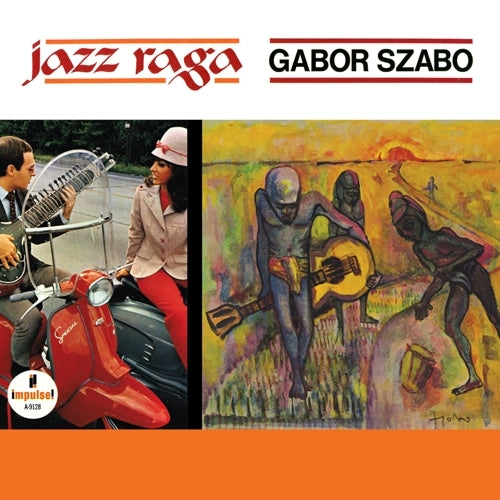Home Jazz Raga
Gabor Szabo
Jazz Raga
LITA053CD
• Landmark Impulse! Records release
• Influenced scores of classic albums from Beck’s “Odelay” to Santana’s “Abraxas”
• First time released on CD, and first LP reissue
• CD includes 40-page color booklet
• LP is enclosed in beautifully crafted gatefold jacket and printed on 180-gram vinyl
• Liner notes written by Doug Sheppard (Ugly Things, Goldmine), and includes interviews with Bernard Purdie, Rudy Van Gelder and Jack Gregg, unseen photos courtesy of the Szabo family, as well as a rare 1967 interview Szabo gave to DownBeat Magazine.
• Remastered from original tapes
Description
Gabor Szabo was a fearless innovator, and 1967’s Jazz Raga stands as a testament to his experimental brilliance. It is a record stuffed with myriad styles, a cross-section of global influences that include jazz, rock and psychedelic folk tinged with sitars, a Latin-influenced backbeat (courtesy of session drummer Bernard Purdie, whose play here is sterling), as well as traditional European sounds. It is a hypnotic blend, a rich musical fusion crafted by a master artisan.
Gabor Szabo was a fearless innovator, and 1967’s Jazz Raga stands as a testament to his experimental brilliance. It is a record stuffed with myriad styles, a cross-section of global influences that include jazz, rock and psychedelic folk tinged with sitars, a Latin-influenced backbeat (courtesy of session drummer Bernard Purdie, whose play here is sterling), as well as traditional European sounds. It is a hypnotic blend, a rich musical fusion crafted by a master artisan. Szabo’s guitar work on Jazz Raga is among the best of his career, a sublime performance in which Szabo’s free runs, discordant chords and lilting solos produce a distinct, engrossing sound. From the blissed-out “Walking On Nails” to the sitar-heavy “Mizrab” to the inspired cover of “Paint It Black,” it is clear why Jazz Raga has, in the decades since its release, become an important and influential work for scores of musicians fortunate enough to come across its path.
Artist Bio
A tireless innovator, the famed guitarist’s distinctive compositions incorporated a range of styles. Szabo created songs that were cutting-edge, producing evocative music from a number of disparate sources – jazz and rock fused with hints of his native Hungary, as well as Indian, Asian and Latin traditions. Aside from a stint at the Berklee College of Music in the late 1950s, Szabo was largely self-taught, and this solitary training imbued him with a penchant for independent thinking, helping to shape his experimental style. During the 1960s, Szabo played with the likes of the avant-garde Chico Hamilton quintet, the Gary McFarland quintet, and the Charles Lloyd quartet. His solo work, along with the quintet he formed in the late 1960s, expanded upon his push-the-boundaries style. Despite his impressive output, Szabo is perhaps best known for his song “Gypsy Queen,” which was reinterpreted by Carlos Santana into his hit “Black Magic Woman.” Szabo was just 45 when he died in 1982, but his artistry and creativity remain standards for inventive, original musicianship.








